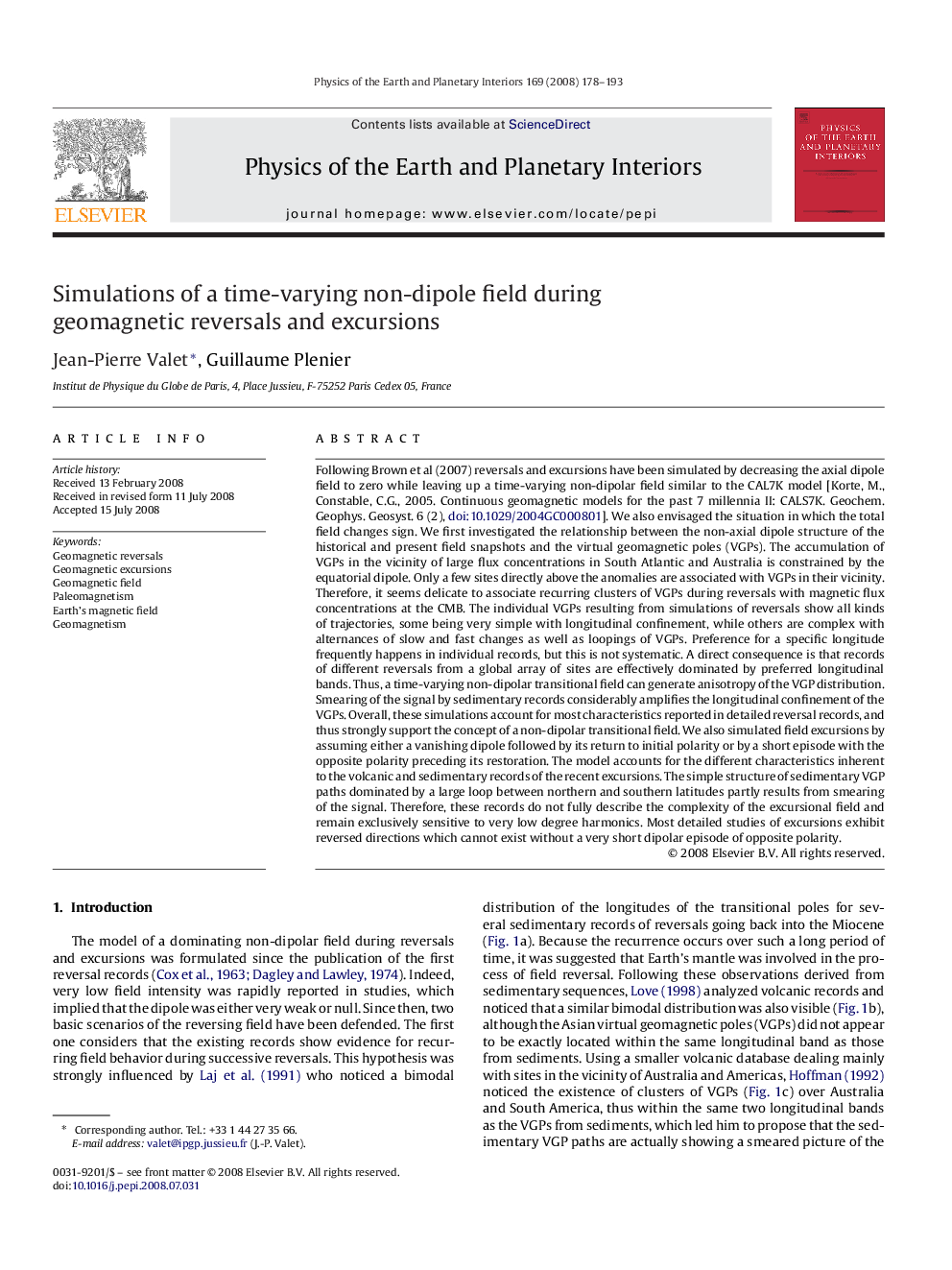| Article ID | Journal | Published Year | Pages | File Type |
|---|---|---|---|---|
| 4742643 | Physics of the Earth and Planetary Interiors | 2008 | 16 Pages |
Following Brown et al (2007) reversals and excursions have been simulated by decreasing the axial dipole field to zero while leaving up a time-varying non-dipolar field similar to the CAL7K model [Korte, M., Constable, C.G., 2005. Continuous geomagnetic models for the past 7 millennia II: CALS7K. Geochem. Geophys. Geosyst. 6 (2), http://dx.doi.org/10.1029/2004GC000801]. We also envisaged the situation in which the total field changes sign. We first investigated the relationship between the non-axial dipole structure of the historical and present field snapshots and the virtual geomagnetic poles (VGPs). The accumulation of VGPs in the vicinity of large flux concentrations in South Atlantic and Australia is constrained by the equatorial dipole. Only a few sites directly above the anomalies are associated with VGPs in their vicinity. Therefore, it seems delicate to associate recurring clusters of VGPs during reversals with magnetic flux concentrations at the CMB. The individual VGPs resulting from simulations of reversals show all kinds of trajectories, some being very simple with longitudinal confinement, while others are complex with alternances of slow and fast changes as well as loopings of VGPs. Preference for a specific longitude frequently happens in individual records, but this is not systematic. A direct consequence is that records of different reversals from a global array of sites are effectively dominated by preferred longitudinal bands. Thus, a time-varying non-dipolar transitional field can generate anisotropy of the VGP distribution. Smearing of the signal by sedimentary records considerably amplifies the longitudinal confinement of the VGPs. Overall, these simulations account for most characteristics reported in detailed reversal records, and thus strongly support the concept of a non-dipolar transitional field. We also simulated field excursions by assuming either a vanishing dipole followed by its return to initial polarity or by a short episode with the opposite polarity preceding its restoration. The model accounts for the different characteristics inherent to the volcanic and sedimentary records of the recent excursions. The simple structure of sedimentary VGP paths dominated by a large loop between northern and southern latitudes partly results from smearing of the signal. Therefore, these records do not fully describe the complexity of the excursional field and remain exclusively sensitive to very low degree harmonics. Most detailed studies of excursions exhibit reversed directions which cannot exist without a very short dipolar episode of opposite polarity.
